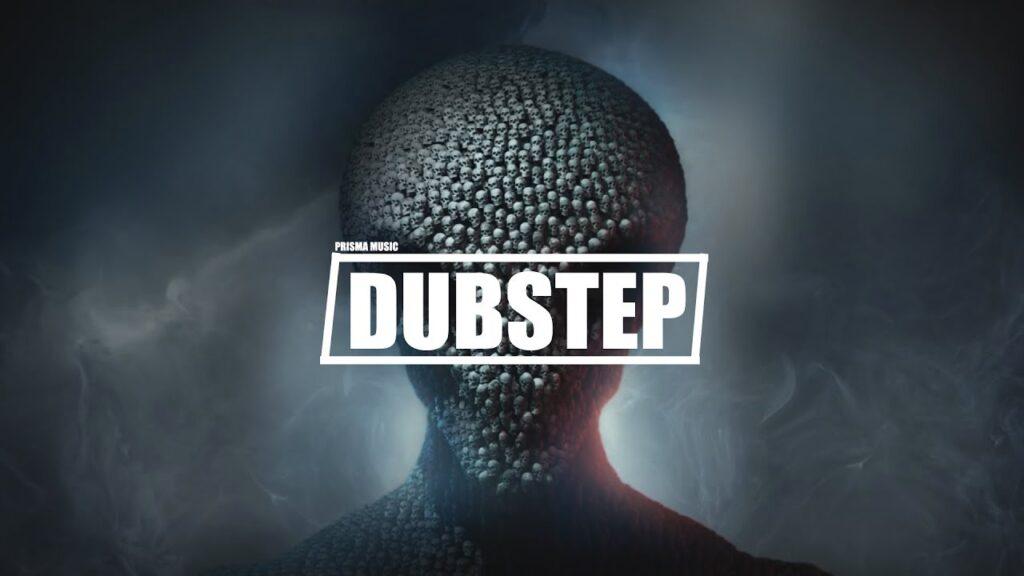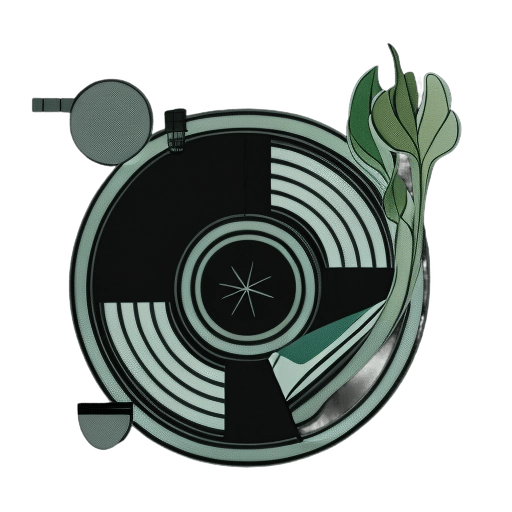Dubstep has exploded in popularity over the past decade for its huge basslines, grimey melodies, and unpredictable sound design. But those same erratic qualities that make Dubstep tracks so exciting to listen to also make Dubstep one of the most challenging EDM genres for beginner DJs to mix.
The irregular beat patterns, lack of consistent intros, and ever-changing song structures require creative mixing skills to blend Dubstep’s glitchy tracks into a cohesive DJ set. While it takes practice to get the hang of mixing those crunchy bass wobbles and swirling leads, learning how to DJ Dubstep opens up an entirely new world of possibilities for expressive transitions and high-energy sets.

In this comprehensive beginner’s guide, we’ll break down all the tips and techniques you need to start mixing Dubstep like a pro. You’ll learn how to beatmatch effectively despite Dubstep’s disjointed rhythms, use EQing to balance the booming bass, and pull off advanced mixing tricks like double drops and genre transitions.
Whether you’re a bedroom DJ just getting started or looking to incorporate more Dubstep into your sets, this guide will give you the expertise to start unleashing those filthy basslines. Let’s drop in and get started!
Why is Dubstep Difficult to Mix?
Unlike other EDM genres that have consistent kick drum patterns, Dubstep’s irregular rhythms and disjointed song structures make it uniquely challenging for beginner DJs. Here are some of the main reasons mixing Dubstep can be tricky:
- Unpredictable beat patterns – Dubstep tracks rarely have a straight-forward 4/4 kick drum intro like house music. The beats tend to be more syncopated and fast-changing, which makes beatmatching by ear very difficult.
- Lack of consistent intros/outros – Most Dubstep tunes jump right into the first drop rather than having a long, mixable intro. Outros also end abruptly rather than fading out slowly. This limits your mix points.
- Extreme bass emphasis – The huge emphasis on bass saturates the low end, making it nearly impossible to hear the kicks of two tracks at once to beatmatch. The booming basslines tend to overpower other elements.
- Frequent structural changes – Dubstep tracks glitch and switch up constantly. The rhythms rarely stay steady for 8 or 16 bars like in other EDM genres, which can quickly throw off your beatmatching.
- Difficult to mix with other genres – Dubstep’s tempo and vibe differs hugely from house, techno, and trance, making harmonic mixing and smooth genre transitions a challenge.
While these factors make mixing Dubstep seem daunting at first, the key is to use techniques that work with the irregularities rather than against them. Once you know how to accentuate Dubstep’s unique rhythms, it opens up a whole new world of creative mixing possibilities.
Gear Needed to Mix Dubstep
While you don’t need much equipment to mix Dubstep in your bedroom, having the right gear goes a long way in helping you beatmatch and perform transitions accurately. Here are some of the essential pieces of gear for mixing Dubstep:
Laptop or DJ Controller
A laptop running DJ software like Serato or Rekordbox is the most versatile and cost-effective option allowing you to build a large digital music library. For a more hands-on experience, all-in-one DJ controllers like the Pioneer DDJ-400 or Numark Mixtrack Pro FX offer physical jogwheels, faders, and pads to manipulate your mix.
DJ Headphones
Quality headphones are crucial for cueing tracks and isolating the sounds you want to focus on whether beatmatching or searching for mix points. Look for over-ear headphones with excellent noise isolation like the Technics RP-DH1200 or Sony MDR-7506.
Studio Monitors or PA system
While headphones allow you to preview tracks, you’ll need speakers actually output the full-frequency sound for your audience. Look for speakers or monitors that reproduce sub-bass accurately like the Adam Audio T7V or Rokit 5 G4 so you can truly feel those Dubstep wobbles.
DJ Mixer (optional)
A hardware DJ mixer lets you separate channels for smoother volume and EQ control between tracks compared to only using your laptop or controller. For Dubstep, look for a mixer with strong bass EQ like the Allen & Heath Xone 23 or 96.
Mixing Software
For digital mixing, you’ll need DJ software to load tracks and perform mixes. Serato, Rekordbox, Traktor, and Virtual DJ all have dedicated Dubstep remix decks for creative transitions. Many also have key detection and sync options to simplify beatmatching Dubstep.
Beatmatching Tips for Dubstep
Beatmatching is the foundation of DJ transitions, but Dubstep’s scattered rhythms can make matching beats extremely tricky. Here are some tips to beatmatch Dubstep effectively:
- Tune your ear to the snare – Dubstep’s booming basslines are so loud that trying to match kicks is near impossible. Tune your ear to listen for the sharp snare hit instead which cuts through more clearly.
- Watch the waveforms – Visually lining up clean waveform shapes in your DJ software gives you a visual reference point since listening alone is deceiving. Set cue points on the 1 beat.
- Use sync judiciously – The sync button lines up BPMs automatically, but won’t fix highly irregular beats. Use it briefly to get in the ballpark, then fine-tune by ear.
- Slice out clean sections – Isolate a steady 4 bar section of each track using loop pads or hot cues rather than full tracks with shifting rhythms.
- Match genres – Certain sub-genres like brostep have more regular beats making them easier to mix together than mixing with tearout or riddim.
- Prep your tracks – If beats are totally irregular, edit the tracks in production software to introduce 8 bar sections for easier mixing.
Don’t get frustrated trying to force imprecise beatmatching. Take advantage of Dubstep’s sporadic rhythms to experiment with effects, loop rolls, and unexpected phrase mixing techniques.
EQing Dubstep Tracks
Proper equalization is critical when mixing Dubstep to balance the overpowering low frequencies. Here are some EQ techniques that will make your Dubstep mixes sound cleaner:
- Cut bass on incoming track – Lower the bass completely on the track you’re mixing in so you can clearly hear the snares/hi-hats to beatmatch and mix it in.
- Boost mids on both tracks – Raise the 1-2 kHz range on both tracks to bring out the snare and percussion elements you need to match beats and set cue points.
- Kill lows on outgoing track – When mixing out, cut the bass on the outgoing track while keeping the bass on the new track to avoid a muddy clash.
- Slowly blend bass – As you mix in the new track, gradually raise the bass level over 16-32 bars. Quick bass swaps sound unnatural.
- Slight boost to treble – Add a touch of +2-3 dB boost at 12-15 kHz on both tracks to add clarity so the mix doesn’t sound too dark.
- Use isolator EQs – DJ mixers with isolator EQ knobs are useful for swapping basslines. Dramatically cutting one track’s bass while raising the other’s.
EQing takes some trial and error, so don’t be afraid to tweak settings until you achieve a smooth blend. Clean Dubstep mixes come down to balancing those dominating low frequencies.
Mixing Techniques for Dubstep
Once you have beatmatching and EQing under control, here are some advanced Dubstep mixing techniques to take your transitions to the next level:
Mix Out on the Outro
Most Dubstep tracks have definitive drop sections followed by a break or outro. Mix in your next track on the outgoing track’s outro to keep the energy going seamlessly between drops.
Layer Tracks Together
Use Dubstep’s sparse arrangements to your advantage by layering in elements of the new track like vocal snippets or lead melodies over the outro of the current drop.
Double Drop
For huge energy, set cue points to mix out of one drop directly into the drop of your next track. The sudden switch when the crowd expects a break creates massive excitement.
Echo Out
As one drop ends, use an echo out effect to repeat and decay the last beat over a bar while the new drop enters. This fills the space between transitions smoothly.
Backspin or Brake
Quickly stop the track playing, then backspin or simulate a record stopping to cut off one drop. Then immediately start the next track’s drop for an unexpected surprise.
Pitch Shift
At the end of a drop, set a loop and quickly pitch it down while mixing in the new track at regular pitch for a mind-bending transition.
Don’t be afraid to get creative and even intentionally mismatch drops and rhythms to create original transitions. Experiment and let Dubstep’s irregularity work for you!
Mixing Dubstep with Other Genres
Dubstep’s dark and gritty vibe can make harmonically mixing it with brighter genres like house or trance challenging. Here are some tips for blending Dubstep with other styles of EDM:
- Find melodic sections – Even hardcore Dubstep tracks have breakdowns and bridges. Use these more melodic sections to mix out to a new genre.
- Match intensity – Transition from heavy Dubstep to equally intense electro or midtempo bass music before mixing into mellower house or techno.
- Use cue points – Set cue points where a bright melody or vocal enters in your next track. Launch this right as the Dubstep drop ends for smooth blending.
- Quick genre switches – Use brakes, backspins, or rewinds to abruptly cut one genre for the shock factor of suddenly changing the vibe.
- Lower Dubstep tempo – Slow down harder Dubstep using the pitch fader to meet the BPM of faster EDM genres like trance or drum and bass for easier mixing.
- Effects – Douse the Dubstep track in a wash of reverb or filter sweep effect as you transition genres to earmarks the change in vibe.
Don’t be constrained by harmonic mixing rules. Some of the best genre blends come from unexpected combinations!
Where to Get Dubstep Tracks
Finding high-quality Dubstep tunes is crucial for keeping your tracklist fresh. Here are the best sources online to get the latest Dubstep tracks:
Beatport
Beatport is the go-to platform for electronic music downloads for most DJs. They have a dedicated Dubstep genre section with sub-genres like brostep, riddim, and tearout to explore.
Bandcamp
Many rising and underground Dubstep producers share music directly on Bandcamp. You can often get WAV downloads of tracks there before they release on major platforms.
SoundCloud
SoundCloud has a thriving community of Dubstep artists and selectors sharing previews, exclusives, and free downloads. It’s a great way to discover rising talents.
YouTube Channels
Top Dubstep channels like UKF Dubstep, Never Say Die, Disciple, and Monstercat upload new tracks, mixes, and music videos frequently featuring a range of underground and trending releases.
Dubstep Blogs
Websites like EDM Sauce, Dancing Astronaut, and Your EDM regularly cover new Dubstep releases and free downloads from both established and up and coming producers.
Expanding your music library with fresh, exclusive tracks ensures your Dubstep sets never go stale!
Start Mixing Dubstep with Confidence
Learning to mix Dubstep’s dense textures and warped rhythms brings an entirely new dynamic to your DJing skills. Now that you know techniques like:
- Beatmatching tracks by focusing on the snare
- Balancing the huge basslines with strategic EQing
- Mixing through double drops and unexpected transitions
- Blending Dubstep with other genres smoothly
- Finding the best online sources for dubstep tunes
You have all the tools you need to start performing killer Dubstep DJ sets!
It will take time and practice to get fully comfortable mixing Dubstep’s irregular structure. But once you embrace the genre’s unconventional vibes, you’ll be able to perform creative mixes that no other DJs can pull off.
Conclusion
We hope this guide has provided you with a solid foundation to start unleashing those booming Dubstep basslines. Let us know if you have any other questions in the comments! We wish you the best as continue growing your Dubstep mixing expertise.


